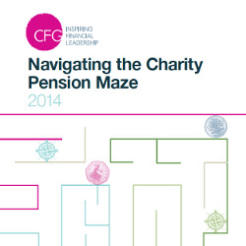Pension problems are the biggest threat faced by the charity sector, the chief executive of the Charity Finance Group, Caron Bradshaw, said yesterday.
Bradshaw was speaking at the launch of her organisation’s new report, Navigating the Charity Pension Maze 2014, which outlines the difficulties faced by charities in affording pension schemes, and says organisations in multi-employer schemes face particular challenges.
Pensions minister Steve Webb, who also spoke at the launch, told the audience that he was open to the idea of changing pensions rules to prevent charities facing massive debts when they attempted to close their pension schemes.
Charities face £1.5bn shortfall
The majority of problems charities face with pensions are with defined benefit schemes, where the charity agrees to pay a fixed amount to employees in retirement, usually based on their final salary. Most of these schemes are in deficit as a result of poorer-than-expected performance of investment assets and increases in longevity.
The report estimates that the sector has a combined pension deficit of £1.5bn, of which £1.2bn is within the 533 largest charities. However it says that smaller charities may actually face more serious challenges, as they are more likely to participate in multi-employer schemes, which are often very expensive to contribute to, but also very difficult to leave.
Bradshaw told an audience of finance experts that all sectors and industries faced a “growing pensions time bomb” with defined benefit schemes, but that this has a unique impact on charities, because they would find it difficult to ask for donations if a significant proportion of that money was being spent on pensions.
“In other industries, you hear of an organisation being described as ‘a pension scheme with an airline attached’, but do that airline’s customers care if their money goes in profits or to pay pensions?” she said. “Similarly, if a local council spends a lot of tax money on pensions, you may not like it, but there’s not much you can do.
“The reason I think it’s the biggest threat for charities is that it’s easy for the media to portray this as your charitable donation going to prop up a pension scheme.”
She said charities also faced problems because their structure was very different from the businesses pension rules were designed for. The CFG is currently negotiating with the Pensions Regulator and with the Pension Protection Fund, which takes payments from employers in direct benefit schemes to ensure employees still receive their pensions if the employer becomes insolvent. Both organisations have said they want to produce rules specific to charities.
Steve Webb, the pensions minister and Liberal Democrat MP for Thornbury and Yate, told the audience that he also believed charities faced a uniquely difficult position, because in other industries, shareholders might agree to a dividend cut to allow time to sort out pensions issues, but charity stakeholders would not permit the charity to spend a large amount of money solving pensions problems.
Multi-employer scheme problems
Webb said he was looking at whether he could introduce legislative change to help charities in multi-employer pension schemes.
The CFG estimates that up to 5,000 charities are members of a multi-employer scheme, in which employers join together to pay pension costs. Like other defined benefit schemes, most of these schemes are in deficit.
However if a charity wishes to leave such a scheme, they must usually pay a “section 75” debt, where they make up all the deficit at once. The debt on a “withdrawal basis” is usually a much larger amount of money that the shortfall if they remain within the scheme, and is usually unaffordable for a charity employer – often as much as the total annual income of the charity.
Even charities in local authority pension schemes, which are not legally required to meet these debts, are usually still forced to do so.
As a result, charities are forced to remain within the scheme and continue to accrue more debts.
Webb said he hoped to be able to change the rules so a charity would not trigger a section 75 debt if they closed their scheme to future accruals by members.
“We’re looking at whether we can do something to help charities which wouldn’t touch anyone else,” Webb said. “We’re looking at a way a charity can leave a scheme that doesn’t trigger an exit debt.”
John Tranter, director of finance at the Children’s Trust and one of the authors of the report, told the meeting that following the introduction of a new statement of recommend practice governing charity accounting, multi-employer pension scheme liabilities would appear on many charity balance sheets for the first time.
“We think this could add another £1bn of liabilities on charity balance sheets,” he said.
Charities could pay millions more to PPF
The Pension Protection Fund is consulting on plans to change the way charities’ contributions are valued, to better reflect the fact that insolvency rates among not-for-profit organisations are far lower than businesses. The consultation closed earlier this week
The National Association of Pension Funds, which has worked with the CFG to help develop charity-specific rules, said in its response to the consultation that it is concerned not-for-profit organisations will end up paying more.
“The aim of this new model is to ensure that the levy better reflects the insolvency risk of the organisations sponsoring the defined benefit schemes,” said Helen Forrest, policy lead on defined benefit schemes at the NAPF. However, the move to a new PPF-specific model of insolvency risk is not without challenges and, overall, the not-for-profit sector looks set to be one of the losers in terms of increased levy payments.
“We are keen to hear from not-for-profit and charity employers on how these changes will affect their organisation.”









